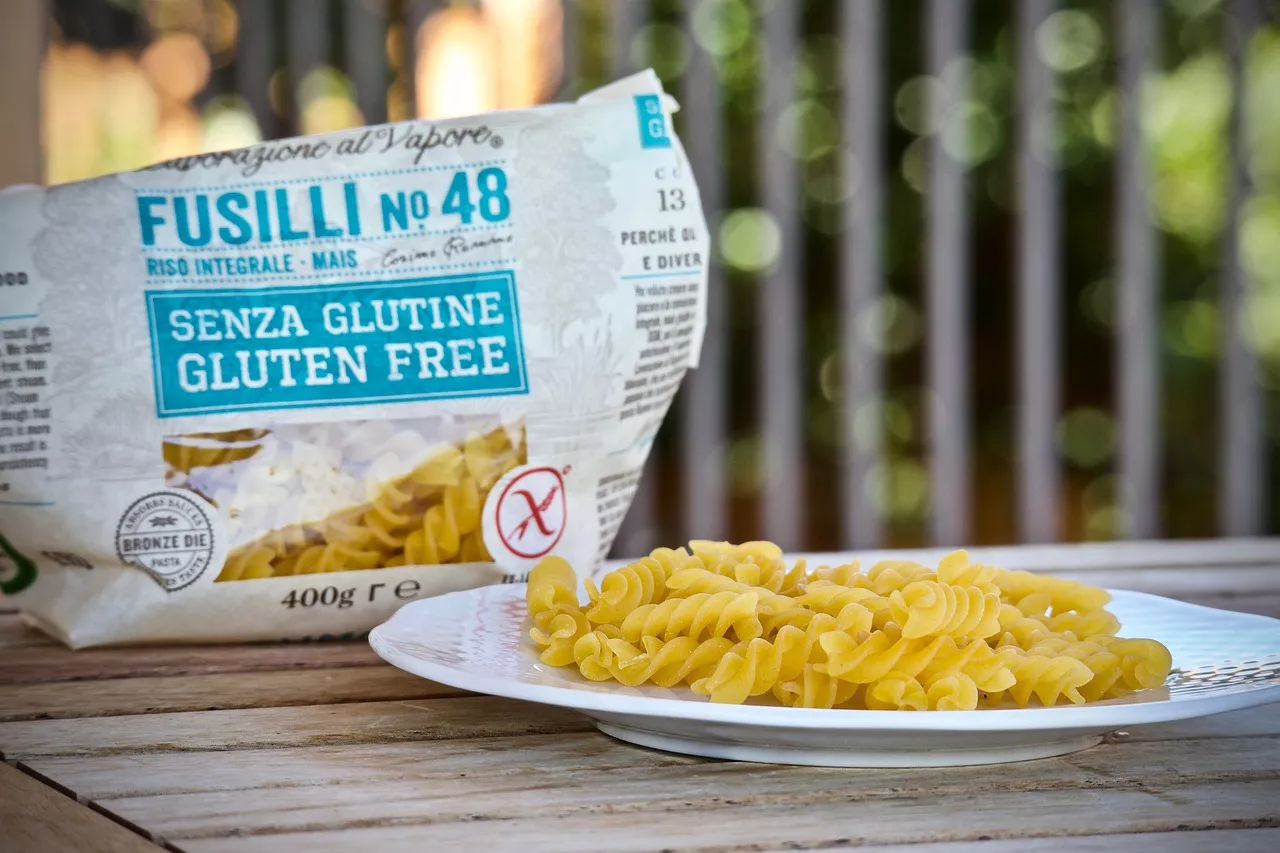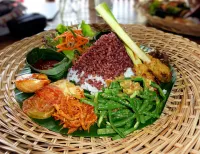Benefits of a Gluten-Free Lifestyle
A gluten-free lifestyle has gained popularity in recent years, and for good reason. Many people have found that eliminating gluten from their diets can lead to improved digestion, increased energy levels, and better overall health. But what exactly is gluten, and why should you consider going gluten-free?
Gluten is a protein found in grains such as wheat, barley, and rye. For some individuals, consuming gluten can cause a range of symptoms, including bloating, abdominal pain, and fatigue. Those with celiac disease, an autoimmune disorder, must strictly avoid gluten to prevent damage to their small intestine. However, even those without celiac disease may benefit from reducing their gluten intake.
By adopting a gluten-free lifestyle, you can experience a variety of benefits. Firstly, you may find relief from digestive issues such as bloating and gas. This is because gluten can be difficult for some people to digest, leading to discomfort and inflammation in the gut. Additionally, many gluten-free foods are naturally high in fiber, which can promote regular bowel movements and support a healthy digestive system.
Going gluten-free can also help boost your energy levels. Gluten-containing foods can sometimes cause fatigue and brain fog in sensitive individuals. By eliminating gluten from your diet, you may experience increased mental clarity and sustained energy throughout the day.
Furthermore, a gluten-free lifestyle can provide an opportunity to explore new and nutritious foods. By removing gluten from your meals, you'll be encouraged to experiment with alternative grains and flours, such as quinoa, buckwheat, and almond flour. These ingredients not only offer unique flavors and textures but also boast a host of essential vitamins, minerals, and antioxidants.
Understanding Gluten and Its Effects on the Body
To fully understand the impact of gluten on the body, it's important to delve deeper into its composition and how it interacts with our digestive system. Gluten is a combination of two proteins: gliadin and glutenin. These proteins are responsible for the elastic texture of dough and give bread its characteristic chewiness.
In individuals with celiac disease, consuming gluten triggers an immune response that causes damage to the lining of the small intestine. This damage can lead to malabsorption of nutrients, resulting in deficiencies of important vitamins and minerals. Over time, untreated celiac disease can lead to a range of health issues, including anemia, osteoporosis, and even certain types of cancer.
Even if you don't have celiac disease, gluten can still have adverse effects on your body. Non-celiac gluten sensitivity is a condition in which individuals experience symptoms similar to those of celiac disease, but without the accompanying intestinal damage. These symptoms can vary widely and may include gastrointestinal distress, joint pain, fatigue, and skin problems.
It's worth noting that not everyone needs to eliminate gluten from their diets. Some individuals can tolerate gluten without any issues and may even benefit from its nutritional value. However, if you experience persistent symptoms that seem to improve when you avoid gluten, it may be worth exploring a gluten-free lifestyle under the guidance of a healthcare professional.
Tips for Transitioning to a Gluten-Free Diet
Making the switch to a gluten-free diet can seem daunting at first, but with the right knowledge and preparation, it can be a smooth and enjoyable transition. Here are some tips to help you get started:
1. Educate yourself: Take the time to learn about gluten, which foods contain it, and how to identify hidden sources of gluten. This will empower you to make informed choices and avoid accidental gluten exposure.
2. Read labels carefully: When shopping for gluten-free products, always read the ingredient list to ensure they are truly gluten-free. Look out for ingredients like wheat, barley, rye, and malt, which are common sources of gluten.
3. Stock up on gluten-free staples: Fill your pantry with gluten-free alternatives such as quinoa, brown rice, gluten-free oats, and a variety of gluten-free flours. Having these staples on hand will make it easier to whip up delicious gluten-free meals.
4. Focus on whole foods: Instead of relying on processed gluten-free products, emphasize whole, unprocessed foods in your diet. Fresh fruits, vegetables, lean proteins, and healthy fats can form the foundation of a nutritious gluten-free eating plan.
5. Seek support: Join online communities or support groups where you can connect with others who are following a gluten-free lifestyle. They can provide guidance, recipe ideas, and support during your transition.
Remember, transitioning to a gluten-free diet is a personal journey, and it may take time to adjust. Be patient with yourself and focus on the positive changes you're making for your health.
Delicious Gluten-Free Breakfast Recipes
Breakfast is often considered the most important meal of the day, and with these gluten-free recipes, you'll be able to start your mornings off right. From fluffy pancakes to nutrient-packed smoothie bowls, there's something for everyone. Let's dive in!
Recipe 1: Fluffy Gluten-Free Pancakes
Ingredients:
1 cup gluten-free flour blend
1 tablespoon sugar
1 teaspoon baking powder
1/2 teaspoon baking soda
1/4 teaspoon salt
1 cup buttermilk (or dairy-free milk of choice)
1 large egg
2 tablespoons melted butter (or dairy-free alternative)
Optional toppings: fresh berries, maple syrup, or nut butter
Instructions:
1. In a large bowl, whisk together the gluten-free flour blend, sugar, baking powder, baking soda, and salt.
2. In a separate bowl, whisk together the buttermilk, egg, and melted butter.
3. Pour the wet ingredients into the dry ingredients and stir until just combined. The batter should be slightly lumpy.
4. Heat a non-stick skillet or griddle over medium heat. Pour 1/4 cup of batter onto the skillet for each pancake.
5. Cook until bubbles form on the surface of the pancake, then flip and cook for another 1-2 minutes, until golden brown.
6. Serve the pancakes warm with your choice of toppings.
Enjoy a stack of these fluffy gluten-free pancakes, and you'll be ready to take on the day ahead!
Recipe 2: Energizing Acai Bowl
Ingredients:
1 frozen banana
1/2 cup frozen berries (such as blueberries or strawberries)
1 packet acai puree (available in the frozen section of most grocery stores)
1/2 cup almond milk (or milk of choice)
Toppings: granola, sliced banana, shredded coconut, chia seeds
Instructions:
1. In a blender, combine the frozen banana, frozen berries, acai puree, and almond milk.
2. Blend until smooth and creamy, adding more almond milk if needed to achieve the desired consistency.
3. Pour the acai mixture into a bowl and top with your favorite toppings.
4. Enjoy immediately for a refreshing and energizing breakfast.
This acai bowl is not only delicious but also packed with antioxidants and nutrients to fuel your day.
Recipe 3: Savory Spinach and Mushroom Omelette
Ingredients:
3 large eggs
1/4 cup diced mushrooms
1/4 cup fresh spinach leaves
1/4 cup shredded cheese (such as cheddar or feta)
Salt and pepper to taste
Cooking oil or butter for the pan
Instructions:
1. In a bowl, whisk the eggs until well beaten. Season with salt and pepper.
2. Heat a non-stick skillet over medium heat and add a small amount of cooking oil or butter.
3. Add the mushrooms to the skillet and sauté until they begin to soften.
4. Add the spinach to the skillet and cook until wilted.
5. Pour the beaten eggs over the mushrooms and spinach, swirling the pan to evenly distribute the mixture.
6. Sprinkle the shredded cheese on top of the eggs and cook until the omelette is set.
7. Fold the omelette in half and slide it onto a plate. 8. Serve hot and enjoy a protein-packed breakfast to start your day off right.
These gluten-free breakfast recipes are just the beginning of your culinary journey towards a healthier lifestyle. Stay tuned for more delectable dishes to explore.
Mouthwatering Gluten-Free Lunch Ideas
Lunchtime can often be a rushed affair, but that doesn't mean you have to sacrifice flavor or nutrition. These gluten-free lunch ideas are quick, easy, and guaranteed to satisfy your taste buds.
Recipe 1: Quinoa Salad with Roasted Vegetables
Ingredients:
1 cup cooked quinoa -
1 cup roasted vegetables (such as bell peppers, zucchini, and eggplant) -
1/4 cup crumbled feta cheese -
Handful of fresh herbs (such as parsley or basil) -
2 tablespoons extra-virgin olive oil -
Juice of 1 lemon -
Salt and pepper to taste
Instructions:
1. In a large bowl, combine the cooked quinoa, roasted vegetables, feta cheese, and fresh herbs.
2. In a small bowl, whisk together the olive oil, lemon juice, salt, and pepper to make the dressing.
3. Pour the dressing over the quinoa salad and toss to combine.
4. Serve the salad at room temperature or chilled for a refreshing and satisfying lunch.
This quinoa salad is not only gluten-free but also packed with fiber, protein, and antioxidants, making it a nutritious choice for your midday meal.
Recipe 2: Gluten-Free Wraps with Grilled Chicken and Avocado
Ingredients:
Gluten-free wraps or lettuce leaves -
Grilled chicken breast, sliced -
Avocado, sliced -
Mixed greens - S
liced tomatoes -
Greek yogurt or a dairy-free alternative for the sauce -
Salt and pepper to taste
Instructions:
1. Lay a gluten-free wrap or lettuce leaf on a clean surface.
2. Layer the sliced grilled chicken, avocado, mixed greens, and sliced tomatoes on top.
3. Drizzle with Greek yogurt or a dairy-free sauce of your choice.
4. Season with salt and pepper to taste.
5. Roll up the wrap tightly or fold the lettuce leaf over the filling.
6. Slice in half if desired and enjoy a flavorful and satisfying gluten-free lunch.
These gluten-free wraps are versatile, customizable, and perfect for enjoying on the go or at your desk.
Recipe 3: Quinoa Stuffed Bell Peppers
Ingredients:
4 bell peppers (any color)
1 cup cooked quinoa
1/2 cup black beans, rinsed and drained
1/2 cup corn kernels
1/4 cup diced tomatoes
1/4 cup shredded cheese (such as Monterey Jack or pepper jack)
1/4 teaspoon cumin
1/4 teaspoon chili powder
Salt and pepper to taste
Instructions:
1. Preheat the oven to 375°F (190°C).
2. Cut the tops off the bell peppers and remove the seeds and membranes.
3. In a bowl, combine the cooked quinoa, black beans, corn kernels, diced tomatoes, shredded cheese, cumin, chili powder, salt, and pepper. 4. Spoon the quinoa mixture into the bell peppers, filling them to the top.
5. Place the stuffed bell peppers in a baking dish and cover with foil.
6. Bake for 25-30 minutes, or until the peppers are tender and the filling is heated through.
7. Remove from the oven and let cool for a few minutes before serving.
These quinoa stuffed bell peppers are not only visually appealing but also packed with protein, fiber, and a range of vitamins and minerals.
These gluten-free lunch ideas are just a taste of what's to come. Stay tuned for more mouthwatering recipes to make your midday meal a delicious and nutritious affair.
Flavorful Gluten-Free Dinner Recipes
After a long day, there's nothing better than sitting down to a satisfying and flavorful dinner. These gluten-free dinner recipes will not only tantalize your taste buds but also nourish your body.
Recipe 1: Lemon Garlic Salmon with Roasted Vegetables
Ingredients:
4 salmon fillets
2 tablespoons extra-virgin olive oil
Juice of 1 lemon
2 cloves garlic, minced
Salt and pepper to taste
Assorted vegetables for roasting (such as broccoli, carrots, and Brussels sprouts)
Instructions:
1. Preheat the oven to 400°F (200°C).
2. In a small bowl, whisk together the olive oil, lemon juice, minced garlic, salt, and pepper.
3. Place the salmon fillets in a baking dish and pour the lemon garlic mixture over them, ensuring they are well coated.
4. Arrange the assorted vegetables around the salmon in the baking dish.
5. Bake for 12-15 minutes, or until the salmon is cooked through and the vegetables are tender.
6. Remove from the oven and let rest for a few minutes before serving.
This lemon garlic salmon is not only delicious but also a great source of omega-3 fatty acids and protein. Paired with roasted vegetables, it makes for a well-rounded and satisfying gluten-free dinner.
Recipe 2: Gluten-Free Pasta with Tomato Basil Sauce
Ingredients:
8 ounces gluten-free pasta (such as brown rice or quinoa pasta)
2 tablespoons extra-virgin olive oil
2 cloves garlic, minced
1 can (14 ounces) diced tomatoes
Handful of fresh basil leaves, torn
Salt and pepper to taste
Grated Parmesan cheese (optional)
Instructions:
1. Cook the gluten-free pasta according to the package instructions until al dente. Drain and set aside.
2. In a large skillet, heat the olive oil over medium heat. Add the minced garlic and sauté until fragrant.
3. Add the diced tomatoes to the skillet, along with the torn basil leaves. Season with salt and pepper to taste.
4. Simmer the sauce for 10-15 minutes, allowing the flavors to meld together.
5. Add the cooked pasta to the skillet and toss until well coated in the sauce.
6. Serve hot, garnished with grated Parmesan cheese if desired.
This gluten-free pasta with tomato basil sauce is a classic comfort food dish that will leave you feeling satisfied and content

 From Ropa Vieja to Mojitos Traditional Cuban Cuisine
From Ropa Vieja to Mojitos Traditional Cuban Cuisine Indonesian Cuisine Through Spice, Culture, and Tradition
Indonesian Cuisine Through Spice, Culture, and Tradition



